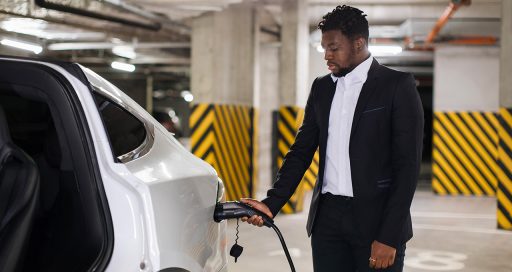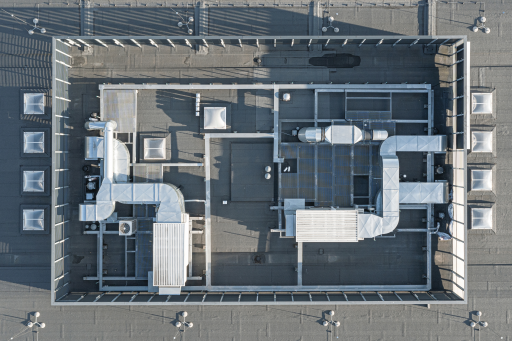A wireless charging motorway project, selected as part of a European call for proposals in July 2019 and led by major French groups among others, could well signal a turning point in the electric vehicle market.
![]()
In 2018, Sweden, which aims to achieve independence from fossil fuels in the transport sector by 2030, became the first country in the world to test an electrified road. The 2 km stretch of road technically replicates the system adopted by some tram systems in France, involving an electrified rail embedded in the central part of the road. Vehicles connect to the rail via a movable arm, which automatically retracts in the event of overtaking or an accident.
Sweden intends to confirm its status as a pioneer of clean energy at the end of 2019 by opening the world’s first wireless charging road on the island of Gotland. This time, the technology is “contactless”, whereby coils installed beneath the road surface communicate with a sensor located under the chassis, thus transferring power to the vehicle.
With a budget of €11 million and initially tested on a truck and a bus on a 1.6 km-stretch of road, this public-private project combines the technology of Israeli startup Electreon and the expertise of Omexom, a VINCI Energies brand specialising in the energy transition.
So, do wireless charging roads represent the future for electric vehicles? For VINCI Autoroutes, VINCI Energies, and Eurovia, sponsors of an original wireless charging motorway project (1), the answer is yes.
Hybrid industrial model
“By enabling any vehicle to top up in transit, wireless charging will remove the main barriers that have blocked the expansion of electric mobility”
“By enabling any vehicle, whether a car, truck or bus, to top up in transit, wireless charging will remove the main barriers that have blocked the expansion of electric mobility on an industrial scale,” says Didier Deschanel, innovation director at Eurovia.
From a user point of view, these barriers are well known: first, the price of electric cars compared with their internal combustion engine vehicle counterparts acts as a disincentive and, second, range is poor (around 300 km for the Zoe model, and a charging time of two hours).
“Electric vehicles currently work very well for daily use. But where they struggle, technically speaking, is in more exceptional cases of long-distance travel. That’s why dynamic charging on motorways could serve as a catalyst,” adds Pierre Delaigue, director of connected, autonomous & electric mobility projects at VINCI Autoroutes.
In cases of long-distance travel, vehicles would run on their own on-board batteries before joining and after leaving the motorway, and would use the energy transferred by wireless charging on the motorway segments.
Technical constraints
Embedding coils in the road surface isn’t an easy task. The electrical cables can be weakened by the high temperature of the asphalt during their installation or by the pressure and vibration of compactors. Moreover, the distance between the receiver and the transmitter must be as short as possible (around 20 centimetres) to ensure energy transmission from the ground to the vehicle.
“Externalities” likely to affect the smooth functioning of the wireless charging system also have to be dealt with, since the presence of water and the potential rise in temperature caused by the operation of the coil infrastructure can end up damaging the asphalt.
Another issue to be taken into consideration is safety. Deployment of the wireless charging model only makes sense if it doesn’t harm the health of people driving or working on motorways. What maximum radiation levels will be authorised by legislators for the coils embedded in the road surface? Will these allow for optimal energy transfer between the road and the vehicles? Upcoming tests should provide answers to these questions but so far initial measurements have been encouraging and solutions exist to prevent electromagnetic field leakage.
A further issue here is whether the grid will be able to meet consumer demand on a large scale. “The French grid operator RTE and Enedis, which manages France’s public electricity distribution network, believe that energy capacity won’t be a problem over the next 10 to 20 years. Particularly since all of the energy efficiency initiatives being carried out on all fronts within the OECD will quickly bear fruit,” points out Arnaud Banner, technical director at Omexom.
Economies of scale
In terms of economic feasibility, motorway electrification will allow economies of scale to be made, with high levels of traffic guaranteeing an accelerated absorption of the investment.
Furthermore, there is no need to electrify the whole motorway. One lane is sufficient and even then it can be electrified in sections to create a boost charge model.
“The savings generated in fossil fuel consumption and in purchasing vehicles – due to reduced battery size – could be used in part to finance the deployment of this new charging infrastructure,” explains Didier Deschanel, innovation director at Eurovia.
So, what is the expected timeframe for being able to drive “for real” using a wireless charging system? Five to ten years, thinks Banner: “The time for R&D has passed; the focus is now on integrating and defining a business model.”
(1) Project selected at the end of July 2019 by the European Union as part of its “User centric charging infrastructure” call for proposals.
20/02/2020





